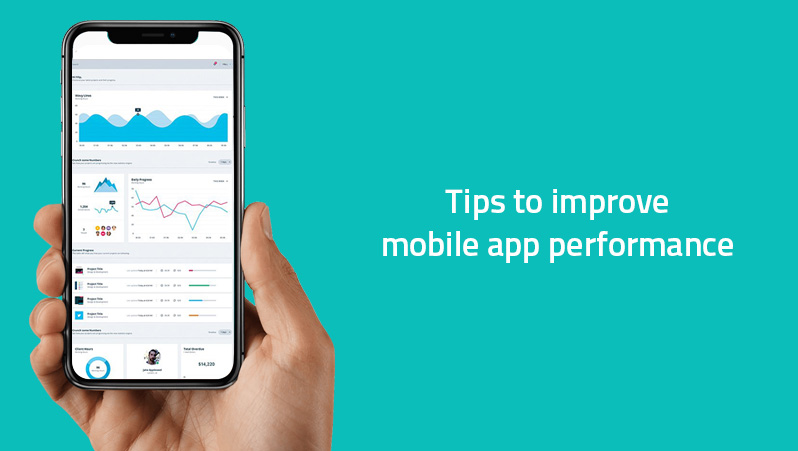
Mobile apps are an essential part of our daily lives, from ordering food to managing finances. However, a poorly performing app can ruin the user experience and lead to negative reviews, impacting an app’s success in the market. Therefore, mobile app developers need to focus on optimizing app performance to ensure that users have a positive experience. In this article, we’ll discuss the best practices for optimizing mobile app performance for faster load times, including choosing the right mobile application development framework, optimizing app design and layout, and leveraging Microsoft business intelligence tools.
Choose the Right Mobile Application Development Framework
When it comes to mobile application development, selecting the right development framework is critical, especially for cross-platform app development. A good framework can significantly impact app performance and contribute to faster load times. Some of the popular frameworks used for cross-platform app development include React Native, Xamarin, and Flutter
React Native is a popular framework that allows developers to build mobile apps for both iOS and Android platforms. It provides a native-like user experience and offers excellent performance. However, it has some limitations when it comes to building complex UI components.
Xamarin is another popular framework that enables developers to build cross-platform apps using a single codebase. It provides excellent performance and allows for easy integration with native platform features. However, it can be more challenging to use than other frameworks and may require additional resources to maintain.
Flutter is a newer framework that has gained popularity among developers due to its speed and ease of use. It enables developers to build high-performance, visually appealing apps using a single codebase. However, its support for native platform features is limited compared to other frameworks.
Optimize App Design and Layout
The design and layout of a mobile app play a crucial role in its performance. Poorly designed apps can significantly impact load times and result in a negative user experience. Therefore, it’s essential to optimize the app’s layout for faster load times. Here are some tips for optimizing app design and layout:
One way to optimize app design and layout is by using lazy loading. This technique involves loading only the necessary elements when the user interacts with the app, reducing the initial load time. For instance, a news app may only load the headlines and a few images initially, with the rest of the article loading as the user scrolls down.
Another way to optimize app design and layout is by minimizing the use of images and animations. While images and animations can enhance the user experience, they can also increase the app’s file size and reduce load times. Developers should only use images and animations when necessary and compress them to reduce file size.
Additionally, developers can reduce the number of HTTP requests by minimizing the number of external resources the app requires, such as fonts and third-party libraries. Fewer HTTP requests mean faster load times.
Finally, developers can optimize app design and layout by using responsive design techniques to ensure the app fits the screen size of different devices. A responsive design can improve the app’s performance on different devices and result in faster load times.
Use Caching and Data Compression Techniques
Caching and data compression are two effective techniques for improving mobile app performance. Caching involves storing frequently used data locally on the device, reducing the need to fetch the same data repeatedly from the server. Data compression, on the other hand, involves compressing data before sending it over the network, reducing the amount of data transferred and improving load times. Here’s how to implement caching and data compression in mobile apps:
To implement caching, developers can use various caching strategies, such as in-memory caching and disk caching. In-memory caching stores data in the device’s RAM, providing fast access to frequently used data. Disk caching, on the other hand, stores data on the device’s storage, allowing for persistent caching of data even after the app is closed.
Developers can also use data compression techniques to improve app performance. One way to do this is by compressing images and other media files before sending them over the network. This can significantly reduce the amount of data transferred and improve load times.
Another way to implement data compression is by using Gzip compression, which compresses the data before sending it over the network and decompresses it on the client-side. This can reduce the amount of data transferred by up to 70%, resulting in faster load times.
Additionally, developers can implement browser caching by setting caching headers on server responses. Browser caching allows the browser to store a copy of the data locally, reducing the need to fetch the same data repeatedly from the server.
Leverage Microsoft Business Intelligence Tools
Microsoft Business Intelligence tools can be invaluable for monitoring and optimizing mobile app performance. These tools provide developers with insights into app usage, performance, and user behavior, allowing them to identify and resolve issues quickly. Here’s how to leverage Microsoft Business Intelligence tools to optimize mobile app performance:
Power BI is a powerful business intelligence tool that provides real time data visualization and analytics. With Power BI, developers can monitor app performance metrics such as app crashes, app latency, and user engagement. By visualizing this data, developers can quickly identify issues and take corrective action.
Azure Application Insights is another popular Microsoft Business Intelligence tool that can be used to monitor and optimize mobile app performance. With Application Insights, developers can track app usage, performance, and user behavior in real-time. This tool also provides powerful analytics and reporting capabilities, allowing developers to gain valuable insights into app performance.
In addition to these tools, developers can also leverage other Microsoft Business Intelligence tools, such as SQL Server Analysis Services (SSAS) and SQL Server Reporting Services (SSRS), to analyze app data and gain insights into app performance.
To Conclude
Optimizing mobile app performance is crucial for delivering a fast and seamless user experience. By selecting the right development framework, optimizing app design and layout, using caching and data compression techniques, and leveraging Microsoft Business Intelligence tools, developers can improve app performance, reduce load times, and improve user engagement. It’s essential to prioritize app performance during the development process to ensure a successful app launch and user adoption.
By following these best practices and taking the help of the right partner, developers can create high-performing, cross-platform apps that meet the needs of today’s mobile users.


